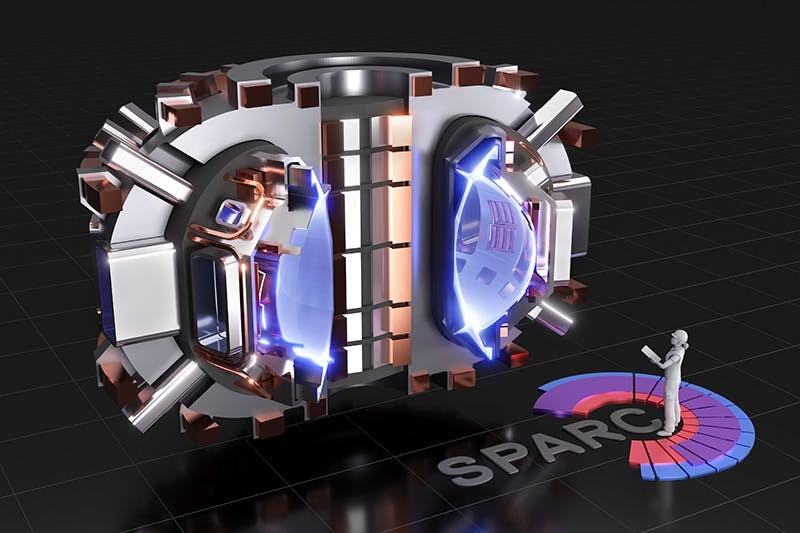The competition is accelerating to harness fusion energy as a clean, infinite power source, and SPARC fusion reactors are at the forefront of this innovative quest.
A critical breakthrough in plasma cooling has been achieved through an advanced gas injection system designed to destroy and optimize the efficiency of the SPARC reactor.
Researchers at Commonwealth Fusion Systems (CFS) have worked with experts from the U.S. Department of Energy’s Princeton Plasma Physics Institute (PPPL), Massachusetts Institute of Technology (MIT), and general Atomics to fine-tune the technology using high prediction simulations.
Their work ensures that SPARC brings fusion energy closer to commercialisation while managing extreme temperatures.
Control of plasma at extreme temperatures
Fusion reactors like SPARC operate at temperatures higher than the solar core, and it is essential to effectively manage plasma behavior.
Plasma breakdown can lead to jets of superheated particles that impact the inner wall of the reactor, which can damage important components.
To mitigate this risk, researchers have developed a system that rapidly injects cooling gas to dissipate excess heat and stabilizes plasma.
However, the challenge lies in finding the exact number and placement of gas valves to maximize efficiency without compromising reactor space.
Advanced simulation unlocks optimal gas injection design
To tackle this issue, the researchers turned to M3D-C1, a sophisticated computational code developed in PPPL.
With this powerful simulation tool, scientists modeled different gas injection configurations and analyzed their effectiveness in mitigating plasma disruptions.
The results revealed that the six gas valve arrangements (3 at the top and three at the bottom of the fusion vessel) provide the best balance between cooling efficiency and spatial optimization.
Precision cooling for sustainable fusion energy
The SPARC fusion reactor utilizes a strong magnetic field to trap the plasma in toroidal or doughnut-shaped configurations.
As an experimental prototype, SPARC is designed to refine key technologies that pave the way for commercial fusion energy production.
The main hurdle of this effort is to enable efficient management of disruptions and to allow the reactor to be rebooted quickly after shutdown.
New gas injection systems will play a key role in achieving this goal. By injecting cooling gas through strategically located valves, the system prevents excessive heat from damaging the walls of the reactor.
This is especially important for high-field fusion devices such as SPARC, which have a high risk of plasma instability.
The cutting edge calculation method improves simulation accuracy
The development of the SPARC gas injection system is one of the most comprehensive confusion simulations ever performed in fusion research.
The team evaluated multiple configurations, including symmetric and asymmetric valve arrangements, using high-performance computing resources.
Each simulation requires several weeks of processing time, indicating the complexity of modeling plasma behavior under real conditions.
An important advance in these simulations was the implementation of non-equidistant meshes. Although traditional simulations divide the fusion reactor into uniform slices, this approach can be a pain to capture fine details.
By applying unequal meshes, researchers were able to assign more computational resolution to critical areas, such as close to the gas valve, while maintaining overall efficiency. This breakthrough significantly improved the accuracy of predicting plasma behavior.
Public-private collaboration drives fusion innovation
The success of this study highlights the importance of collaboration between public institutions and private companies in the competition to develop fusion energy.
PPPL’s expertise in advanced computational modeling helped optimize SPARC designs, while CFS provided cutting-edge engineering capabilities.
This synergy between government-funded research institutes and private industries accelerates the development of practical fusion solutions.
Beyond SPARC, these advancements will also affect future fusion power plants designs, including the CFS-planned ARC power plant in Chesterfield County, Virginia.
By improving the plasma control mechanism, researchers are making concrete advances towards achieving commercially viable fusion energy.
The future of SPARC and fusion energy
The breakthrough in gas injection technology brings fusion energy one step closer to reality. As SPARC fusion reactors continue to evolve, the insights gained from these simulations will contribute to improving next-generation fusion reactors.
With continued advances in plasma stabilization and destruction mitigation, fusion energy has the potential to provide the world with virtually infinite carbon-free power sources.
SPARC lays the foundation for the future that drives clean, sustainable fusion energy by pushing the boundaries of scientific research and promoting strong partnerships.
Source link

